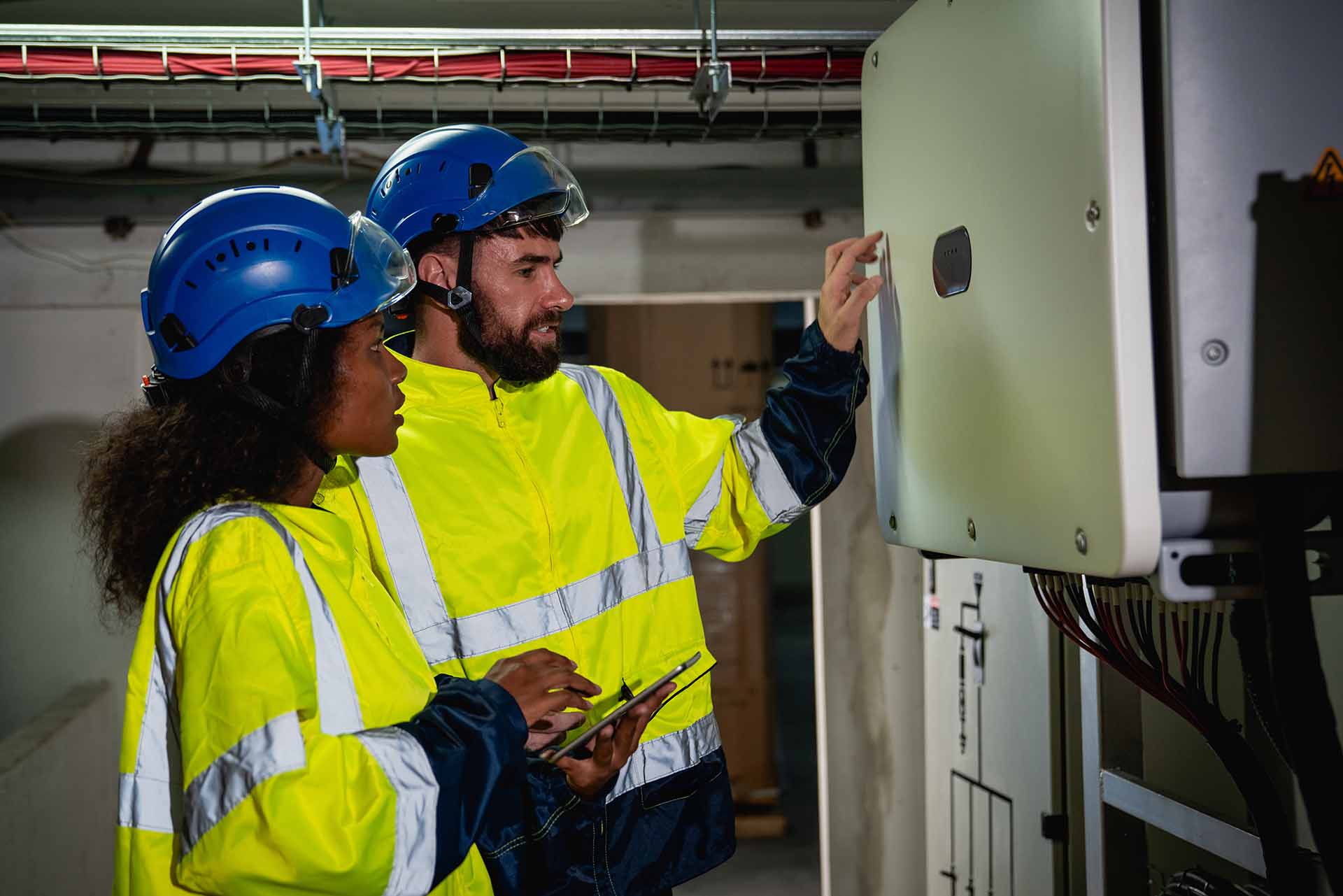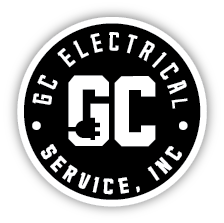The electrical contracting industry is constantly evolving, driven by technological advancements, a growing focus on sustainability, and a shift in consumer demands. As 2024 approaches, several new developments are reshaping the industry and presenting chances and challenges for electrical contractors. Keeping up with these trends is essential for professionals in the field, as they range from integrating smart technologies and renewable energy solutions to adopting sophisticated tools and methods, and cybersecurity is becoming increasingly important.
In order to understand how these trends are changing the industry and what contractors need to know to stay competitive and responsive to the shifting market, let's examine the major developments in electrical contracting for 2024.
What You Need to Know About Electrical Contracting Trends
As the field of electrical contracting continues to evolve, staying informed about the latest trends is essential for professionals to remain competitive and meet clients' evolving needs. Here's what you need to know about the current trends shaping electrical contracting:
Integration of Smart Technologies
The rise of smart technologies is revolutionizing how electrical systems are designed, installed, and managed. Clients seek electrical contractors who can integrate various technologies into their projects to improve sustainability, efficiency, and convenience. These technologies range from energy management systems and smart lighting to integrated building automation solutions.
Focus on Energy Efficiency and Sustainability
With growing concerns about climate change and environmental sustainability, there is a heightened emphasis on energy-efficient and eco-friendly electrical solutions. Electrical contractors are expected to thoroughly understand green building practices, renewable energy sources, and energy-saving strategies to assist clients in lowering their carbon footprint and meeting sustainability regulations.
Embracing Renewable Energy Solutions
In the realm of electrical contracting, the trend toward renewable energy sources like solar, wind, and battery storage is changing the landscape. As more companies and homeowners look to use clean, renewable energy to power their properties, contractors are seeing a rise in demand for installing solar panels, wind turbines, and energy storage systems.
Focus on Cybersecurity
Cybersecurity has emerged as a critical concern as more electrical systems become interconnected and reliant on digital technologies. Electrical contractors must prioritize cybersecurity measures to protect against cyber threats and ensure the integrity and security of electrical infrastructure, including smart grids, IoT devices, and building automation systems.
Adoption of Advanced Tools and Methods
Advancements in technology have led to the adoption of advanced tools and methods in electrical contracting. Contractors use cutting-edge technologies such as drone inspections, virtual reality simulations, Building Information Modeling (BIM), and predictive maintenance algorithms to improve efficiency, produce higher-quality work, and reduce project planning time.
Skilled Workforce Development
A knowledgeable and flexible workforce is becoming more and more necessary as the sector adopts new methods and technologies. Electrical contractors impart employees the knowledge and skills required for success in a rapidly evolving industry through training and professional development programs.
Regulatory Compliance and Safety Standards
Compliance with regulatory requirements and safety standards remains a top priority for electrical contractors. Staying informed on code changes, regulations, and industry best practices is imperative for projects to be finished safely, legally, and to the highest standards possible.
Staying informed about these trends is essential for electrical contractors to remain competitive and meet clients' evolving needs. Through adopting cutting-edge technologies, an emphasis on sustainability and energy efficiency, and a top priority for cybersecurity and safety, contractors can set themselves up for success in a market that is becoming more and more innovative and dynamic.

Eight Ways to Stay Ahead of Electrical Trends
Electrical contractors must stay ahead of the curve to stay in business and offer their clients value. Here are eight strategies to help you stay ahead of the curve:
Continuous Education and Training
Invest in ongoing education and training programs to stay updated on the latest technologies, techniques, and industry best practices. Participate in certification programs and workshops to expand your knowledge and skill set.
Networking and Collaboration
Connect with other professionals, such as architects, engineers, and technology suppliers. Collaboration and networking can keep you up to date on new developments in the market and creative opportunities.
Market Research and Analysis
Regularly conduct market research and analysis to pinpoint market demands, new trends, and potential growth areas for the electrical contracting sector. Stay informed about changes in regulations, codes, and standards that may impact your work.
Embrace Technology
Embrace technology and leverage digital tools and platforms to streamline project management, communication, and collaboration. Explore the latest software applications, automation tools, and project management platforms to improve efficiency and productivity.
Diversification of Services
Diversify your services to meet clients' evolving needs. To increase the range of services you offer and attract new customers, investigate energy efficiency, renewable energy, smart home technologies, and cybersecurity opportunities.
Investment in Research and Development
Allocate resources for research and development initiatives to explore innovative solutions and technologies. Stay proactive in experimenting with new materials, methods, and technologies that have the potential to revolutionize the electrical contracting industry.
Customer Engagement and Feedback
Engage with your clients regularly to understand their needs, preferences, and expectations. Solicit feedback after completing projects to identify areas for improvement and opportunities to innovate.
Adaptability and Flexibility
Remain adaptable and flexible in response to changing market conditions, technological advancements, and client demands. Adopt an innovative and flexible culture to seize new opportunities and swiftly adjust to changing trends.
By implementing these strategies, electrical contractors can position themselves as industry leaders, providing innovative solutions and value-added services to their clients while staying ahead of evolving trends and market dynamics.

Five Sustainable Practices for Electrical Contractors in 2024
Electrical contractors must implement eco-friendly procedures to reduce their environmental effects and satisfy the changing demands of their clientele as the emphasis on sustainability intensifies. Here are five sustainable practices for electrical contractors to consider implementing in 2024:
-
Promote Energy Efficiency
Give top priority to energy-saving options, like LED lighting, energy-efficient appliances, and smart building technologies, when working on electrical projects. Urge customers to invest in energy-saving strategies that minimize their environmental impact while consuming less electricity and paying less for utilities. -
Utilize Renewable Energy Sources
Include renewable energy sources in your electrical projects, such as wind turbines, solar panels, and geothermal systems. Assist clients in designing and implementing renewable energy systems that produce sustainable, clean power and lessen dependency on fossil fuels. -
Reduce Waste and Improve Recycling
Proper material management and recycling can minimize waste generation on job sites. Choose reusable components and materials. Also, ensure that waste is correctly disposed of and recycled to minimize landfill waste and preserve natural resources. -
Embrace Green Building Practices
Adopt green building techniques and certifications, such as LEED (Leadership in Energy and Environmental Design), to design and build environmentally responsible buildings. Incorporate sustainable materials, energy-efficient systems, and environmentally friendly construction techniques to reduce environmental impact and promote occupant health and well-being. -
Educate Clients on Sustainable Options
Inform customers about the advantages of environmentally friendly electrical solutions and assist them in selecting eco-friendly substitutes. Guide available incentives, rebates, and financing options for sustainable upgrades and encourage clients to prioritize sustainability in their projects.
Electrical contractors can lessen their environmental impact, help shift to cleaner energy sources, and satisfy consumer demand for ecologically friendly building methods by implementing these sustainable practices. By working together, we can build a more resilient and sustainable environment for future generations.
Challenges Facing Electrical Contractors in 2024
In 2024, electrical contractors are expected to face several challenges as they navigate an evolving industry landscape. These challenges include:
Adapting to Technological Advances
Electrical contractors need to keep up with the latest technological developments to stay competitive. Integrating smart technologies, like automation systems and Internet of Things devices, requires specific knowledge and training.
Meeting Energy Efficiency Standards
The increasing emphasis on energy efficiency and sustainability presents a challenge for electrical contractors. Contractors must keep up with changing energy codes and standards because clients demand energy-efficient solutions that adhere to strict environmental regulations and green building standards.
Addressing Workforce Shortages
The electrical contracting industry faces a shortage of skilled labor, exacerbated by an aging workforce and insufficient recruitment and training programs. Recruiting and retaining qualified electricians and technicians is a significant challenge for contractors, impacting project timelines and profitability.
Navigating Supply Chain Disruptions
Electrical contractors face serious difficulties due to supply chain disruptions, including material shortages, pricing changes, and logistical challenges. Contractors must take proactive measures to reduce risks because delays in acquiring necessary supplies and machinery can affect project timelines and raise costs.
Managing Regulatory Compliance
Adhering to safety regulations and standards is a difficult and continuous task for electrical contractors. Keeping up with changes in codes, regulations, and licensing requirements at the federal, state, and local levels requires careful attention to detail and proactive risk management.
Ensuring Cybersecurity
Cybersecurity emerges as a critical concern as electrical systems become increasingly interconnected and reliant on digital technologies. Electrical contractors must implement robust cybersecurity measures to protect sensitive data, prevent cyberattacks, and safeguard the integrity of electrical infrastructure.
Addressing Environmental Concerns
The public's growing awareness of environmental issues like pollution and climate change is forcing electrical contractors to adopt environmentally friendly practices. Prioritizing environmental stewardship is necessary for contractors to minimize waste generation, reduce carbon emissions, and promote sustainable solutions.
Managing Project Complexity
Projects are becoming increasingly complex, with larger scopes, tighter schedules, and higher client expectations. Electrical contractors must effectively manage project complexity, coordinate with other trades, resolve conflicts, and ensure seamless project execution to deliver quality results on time and within budget.
In 2024, electrical contractors will face several obstacles, including workforce scarcity, technological advancements, regulatory compliance, and environmental concerns. It takes creativity, adaptability, and a dedication to constant improvement to overcome these obstacles. By addressing these challenges proactively, electrical contractors can position themselves for success in an increasingly competitive and dynamic industry.
Innovations Driving Change in Electrical Contracting 2024
The innovations driving change in electrical contracting for 2024 represent a transformative shift towards smarter, more sustainable, and more efficient electrical systems. As electrical contractors, you are at the forefront of this change, with more opportunities than ever to provide value-added services and meet the changing needs of your clients. From integrating IoT devices and automation technologies to innovations in renewable energy solutions and digital tools, these advancements are the future. By embracing these innovations, you can establish yourself as a leader in the industry, shaping the direction of electrical contracting and ensuring your relevance in the face of technological advancements.
Visit the GC Electrical Service, Inc. blog today to unlock the potential of cutting-edge electrical solutions and take your projects to the next level.


